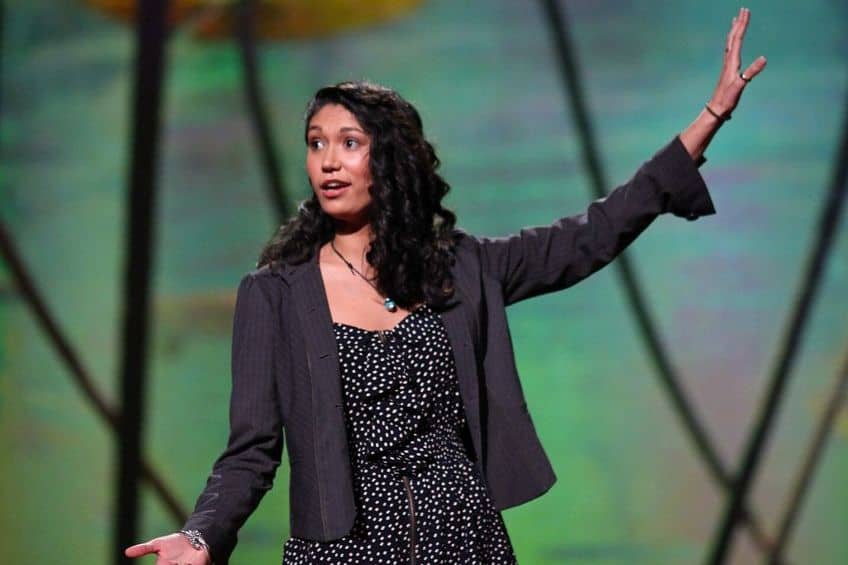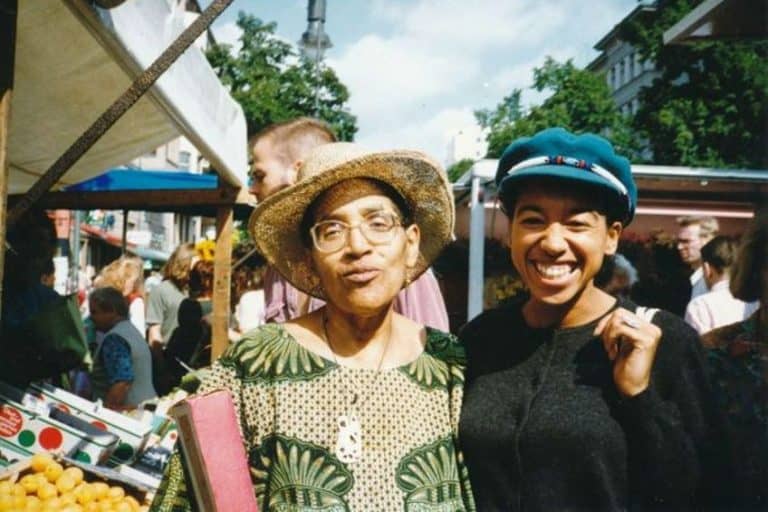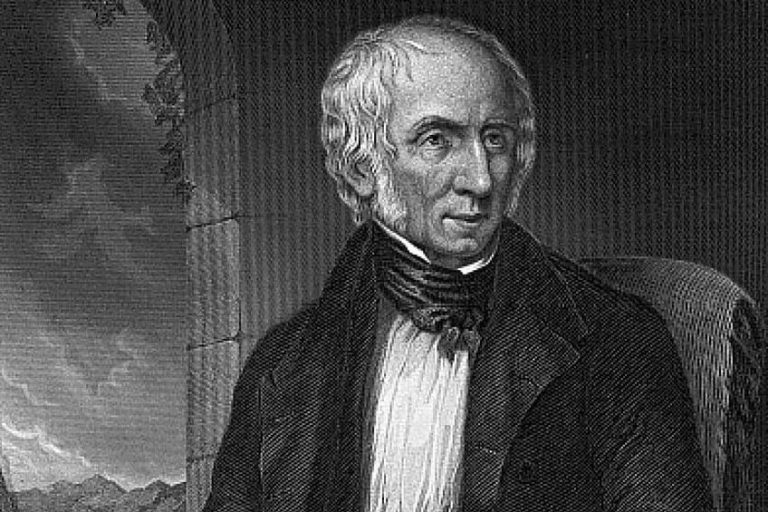Famous Slam Poets – The Art of Poetry Performance
Slam poetry, a dynamic and expressive form of performance poetry, has captivated audiences worldwide with its powerful blend of rhythm, emotion, and social commentary. Emerging in the 1980s in Chicago, it was popularized by Marc Smith, who sought to revive the performative aspect of poetry and make it accessible to a wider audience. Unlike traditional poetry readings, slam poetry competitions—known as slams—encourage poets to deliver their work with passion and conviction, often addressing contemporary issues such as race, identity, and justice. Renowned slam poets like Saul Williams, who merges music and poetry to address themes of identity and resistance, and Patricia Smith, whose vivid storytelling and emotional depth have earned her numerous accolades, have helped elevate slam poetry to an influential cultural movement. Through their compelling performances, these poets have not only entertained but also inspired critical conversations about society and the human experience.
Key Takeaways
- Slam poetry revitalizes the traditional poetry reading with energetic performances.
- It traces back to the 1980s, emphasizing audience engagement through competition.
- Performers use their art to express topical, often socially charged narratives.
What Is Slam Poetry?
Slam poetry, an art form that breathes life into the written word, has surged in popularity as a candid and compelling genre of poetry. Originating from the gritty urban open-mic scenes of the 1980s, it transformed the solitary act of writing poetry into a dynamic performance art. The brainchild of Marc Kelly Smith, slam poetry was conceived out of a desire to infuse poetry readings with vigor and an accessible, competitive edge. It set the stage for poets to not only share their verses but to perform them, adding a potent new dimension to the age-old craft.
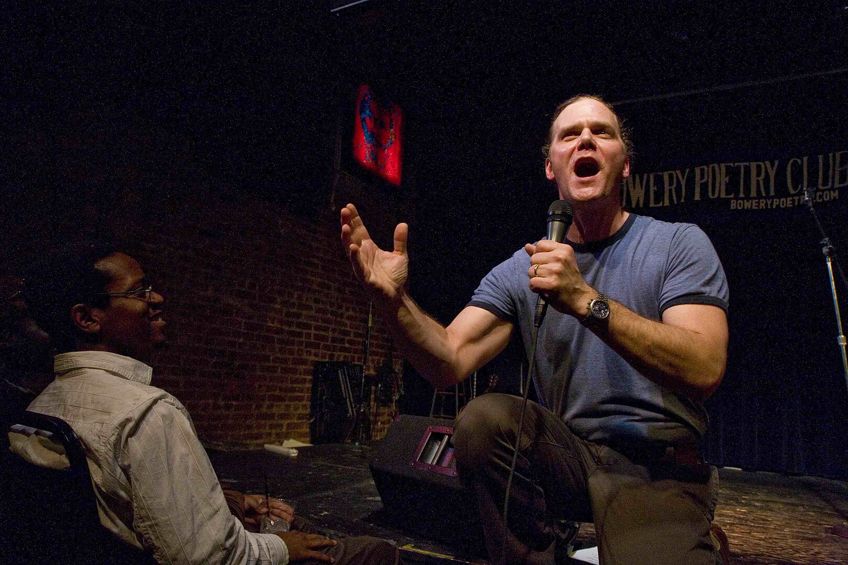
The essence of slam poetry hinges on performance, drawing audience engagement through its emphatic and often improvisational style. Unlike traditional poetry recitals, slam poets are tasked with delivering their compositions with a blend of theatricality and raw emotion that challenges both the performer and the audience. This immediacy has made slam a fertile ground for addressing topical concerns, giving a voice to marginalized perspectives and crafting a narrative around social issues.
As a platform for expression, slam poetry resonates with contemporaneity and diversity, celebrating the power of word and performance in equal measure.
Origins and Development of Slam Poetry
Slam Poetry, an explosive form of spoken-word performance, is rooted in vibrant traditions and has shown phenomenal growth from its inception in Chicago to its global presence today.
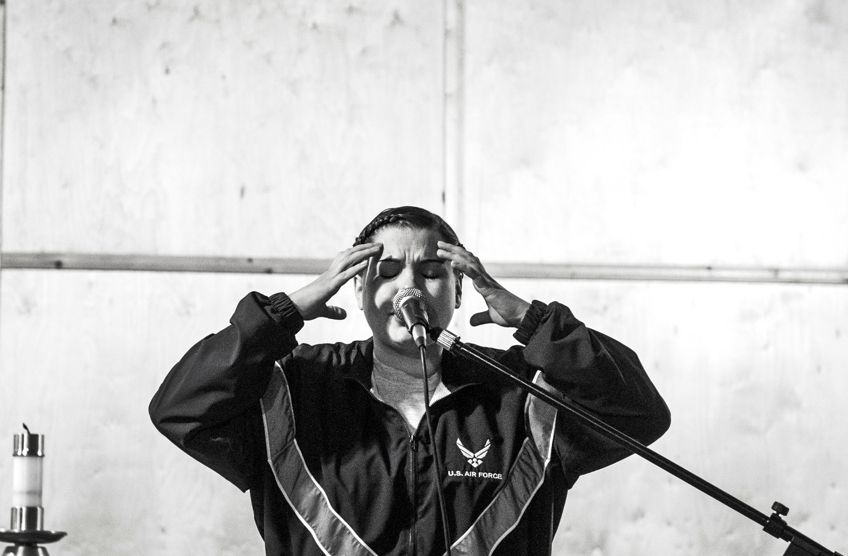
The Birth of Slam Poetry
Chicago lays claim to the genesis of Slam Poetry, where in 1985, Marc Kelly Smith, a retired construction worker and poet, started a movement that would become a cultural phenomenon. Smith initiated the first poetry slams at the Get Me High Lounge, laying the groundwork for performance poetry that blended writing and competition.
His efforts crystallized with the establishment of the Uptown Poetry Slam, which turned into a space for poets to showcase their work and compete, engaging the audience as active participants.
Influential Movements and Icons
The growth of Slam Poetry was influenced by several cultural movements and icons. The Beat Poetry era of the 1950s, led by figures like Allen Ginsberg, was characterized by a free-flowing, rhythmic style that often featured spoken word performance. Parallel to this, the Negritude poets affirmed the cultural identity of black people and used poetry as a form of resistance. In the heart of New York’s Lower East Side, the Nuyorican Poets Cafe was founded by poets including Miguel Algarín and other Puerto Ricans, becoming a critical venue for up-and-coming slam poets to perform and compete. These venues and icons significantly shaped Slam Poetry’s form and essence.
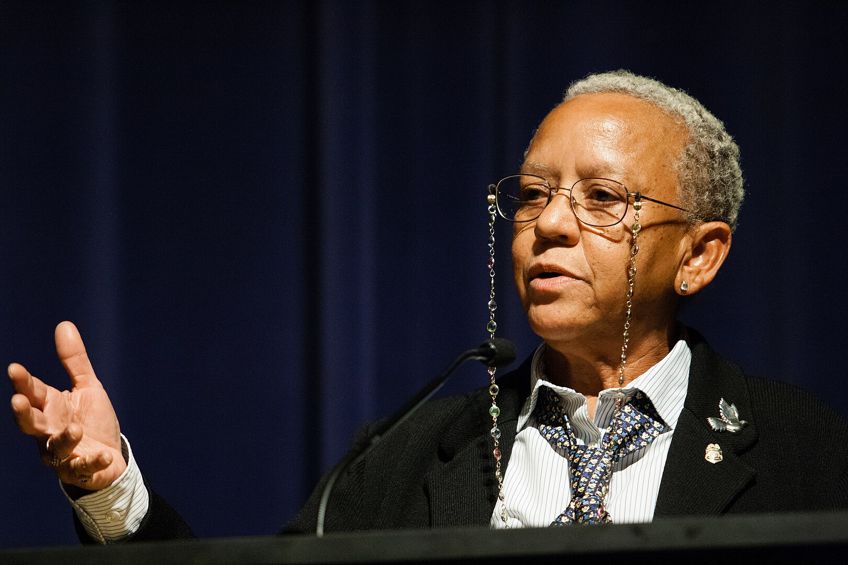
Global Spread
Since its inception, Slam Poetry has witnessed a global spread. The National Poetry Slam was established as an annual competition, drawing in teams of poets from across the United States and eventually from around the world. This platform not only amplified Slam Poetry’s reach but also its variety, showcasing diverse voices and themes that resonate with wider audiences.
Cities worldwide now host their own poetry slams, creating a global network of poets connected through shared rhythms and stories.
Slam Poetry Performance and Style
Slam poetry is as much about the robust performance as it is about the poignant content. It is a unique blend of expressive style, compelling rhythm, and often a delivery that exudes raw truth, touching on themes from current events to personal narratives and social issues.

The Role of Performance
The essence of slam poetry lies in its performance. Slam poets bring their words to life in front of an audience, where style and rhythm play crucial roles. Notable performers like Saul Williams and Beau Sia have mastered the performance aspect, making it an intimate, high-energy experience that resonates with their listeners.
The success of a slam poem often hinges on the poet’s ability to connect with the audience, grabbing their attention and eliciting responses through a dynamic presence.
Themes and Content
Content in slam poetry spans a diverse range of topics, including gender injustices, personal struggles, and current events. It is common for poets to craft monologues that speak to societal issues with honesty and vulnerability. For example, Taylor Mali often explores themes of education and social commentary, using wit and carefully chosen content to engage listeners and provoke thought.

Language and Delivery
The delivery of slam poetry is marked by a distinctive pace and use of language. Poets strategically use pauses, emphasis, and cadence to highlight their message. Spoken word poetry, a key component of slam, relies on a conversational tone that can shift from soft murmurs to impassioned crescendos. The language is typically direct and unadorned, aiming to convey a sense of urgency and authenticity to the listener.
The poet’s delivery, whether it be through well-timed gestures or vocal modulation, serves to reinforce the meaning and emotion behind the words.
Influential Slam Poets and Their Impact
Slam poetry has been a dynamic and engaging medium of artistic expression where poets like Marc Kelly Smith and Saul Williams have left indelible marks. Rising talents continue to shape the evolving landscape of performance poetry, engaging with audiences, and innovating the craft.
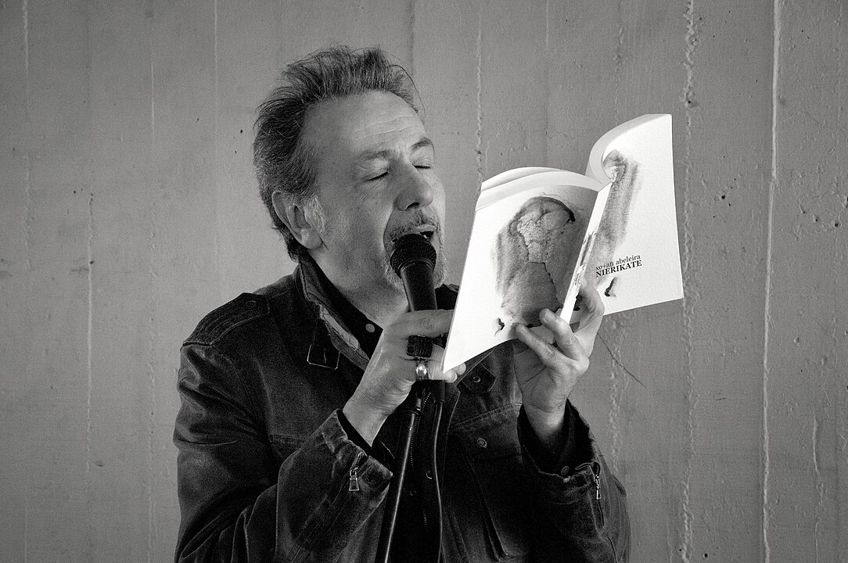
Nikki Giovanni (1943)
| Birth | June 7, 1943 |
| Death | Present |
| Place of Birth | Knoxville, Tennessee, United States |
Nikki Giovanni, while not exclusively a slam poet, has greatly influenced the genre with her powerful and emotive verse. Known for her incisive commentary on race, gender, and social justice, Giovanni’s work resonates with the themes often explored in slam poetry. Her dynamic reading style and ability to connect deeply with audiences have made her a beloved figure in the poetry community.
Giovanni’s contributions to literature and her advocacy for African American culture and rights have cemented her legacy as a pivotal voice in contemporary poetry.
PHOTO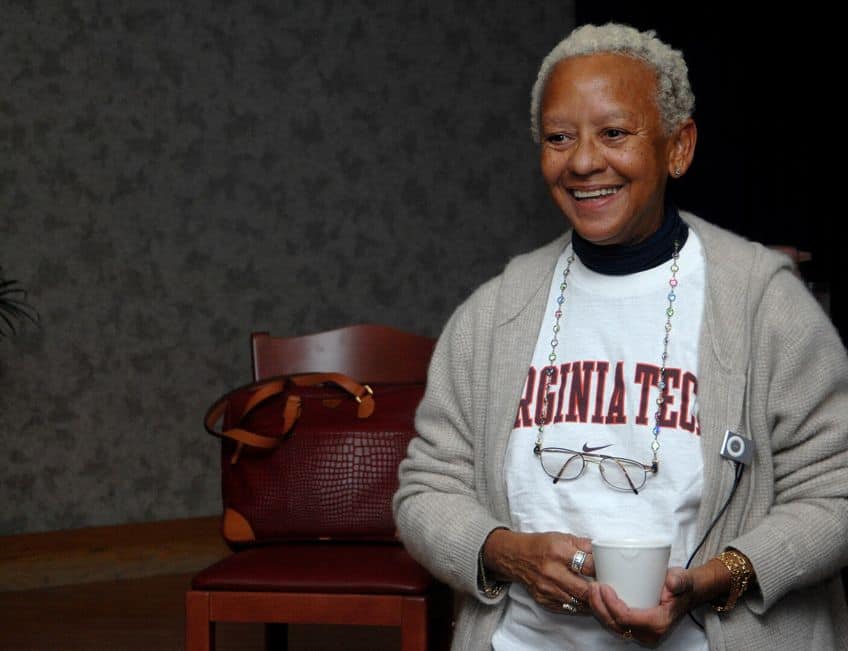
Marc Kelly Smith (1949)
| Birth | 1949 |
| Death | Present |
| Place of Birth | Chicago, Illinois, United States |
Marc Kelly Smith, often hailed as the founder of the slam poetry movement, revolutionized the poetry scene in the 1980s by creating the first-ever poetry slam at Chicago’s Green Mill Tavern. His aim was to bring poetry back to the people, making it accessible and engaging through performance. Smith’s own poetry is characterized by its conversational style, humor, and social critique, challenging traditional notions of poetry and emphasizing the importance of audience interaction.
His contributions have established a thriving global slam poetry community, inspiring countless poets and performers.
Patricia Smith (1955)
| Birth | June 25, 1955 |
| Death | Present |
| Place of Birth | Chicago, Illinois, United States |
Patricia Smith is a celebrated slam poet and four-time individual National Poetry Slam champion, renowned for her masterful storytelling and powerful use of language. Her poetry delves into themes such as race, identity, and social justice, often drawing on personal and historical narratives. Smith’s work is distinguished by its vivid imagery, emotional intensity, and musicality, making her a compelling performer and a highly respected voice in the poetry community.
Her contributions have significantly shaped the landscape of slam poetry, inspiring countless poets with her groundbreaking work and dedication to the craft.
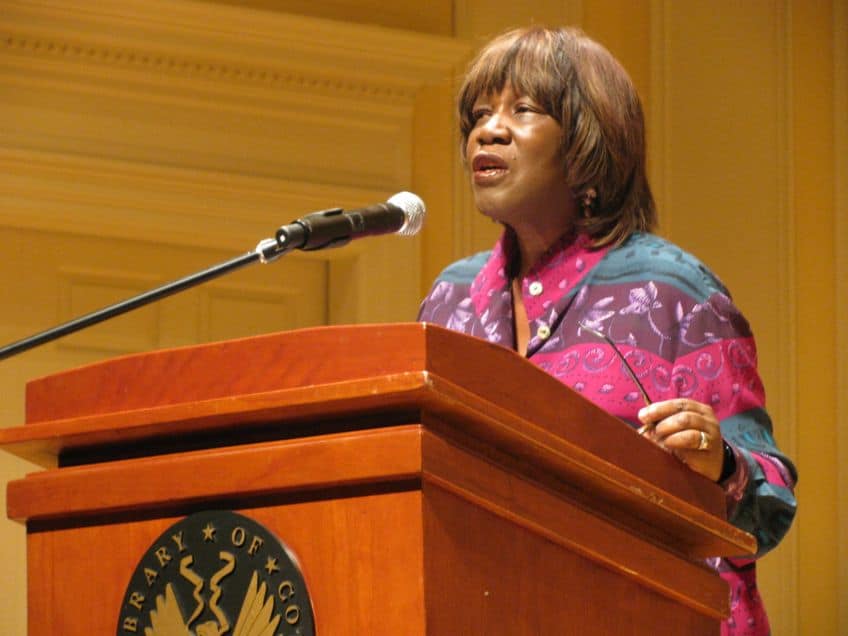
Taylor Mali (1965)
| Birth | March 28, 1965 |
| Death | Present |
| Place of Birth | New York City, New York, United States |
Taylor Mali is a prominent figure in the slam poetry scene, celebrated for his witty, insightful, and often humorous poems that explore themes such as education, language, and human connection. A former teacher, Mali’s most famous work, What Teachers Make, is a passionate defense of educators and has resonated widely with audiences. His performances are known for their clarity, energy, and emotional impact, making him a popular and influential poet in the slam community.
Mali’s commitment to promoting poetry and education continues to inspire both poets and teachers alike.
PHOTO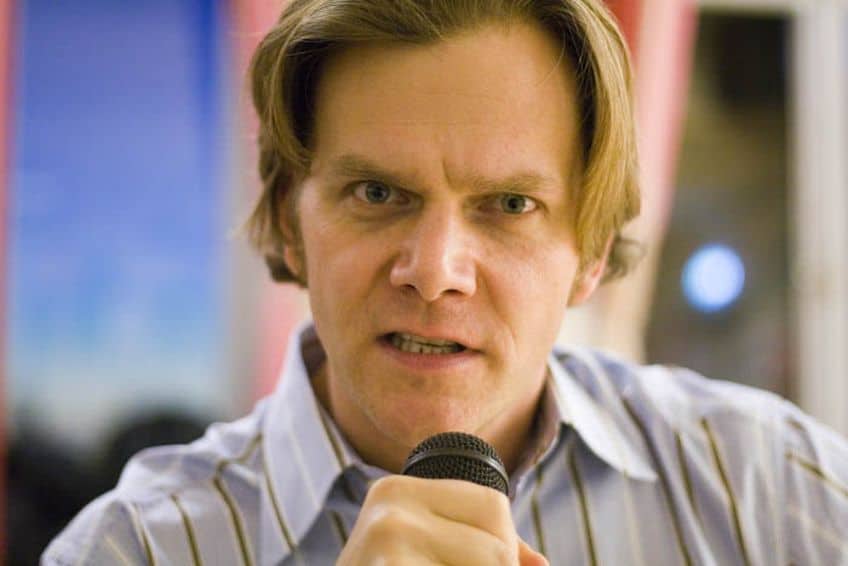
Saul Williams (1972)
| Birth | February 29, 1972 |
| Death | Present |
| Place of Birth | Newburgh, New York, United States |
Saul Williams is renowned for his electrifying performances and his fusion of poetry with music, often incorporating elements of hip-hop and punk. His work addresses themes of identity, race, and resistance, delivering potent social commentary with a unique, rhythmic cadence. Williams’ poetry is marked by its raw intensity and powerful imagery, making him a standout figure in the slam poetry world.
His influence extends beyond poetry, impacting music, film, and literature, and he continues to inspire a generation of poets with his innovative approach to spoken word.
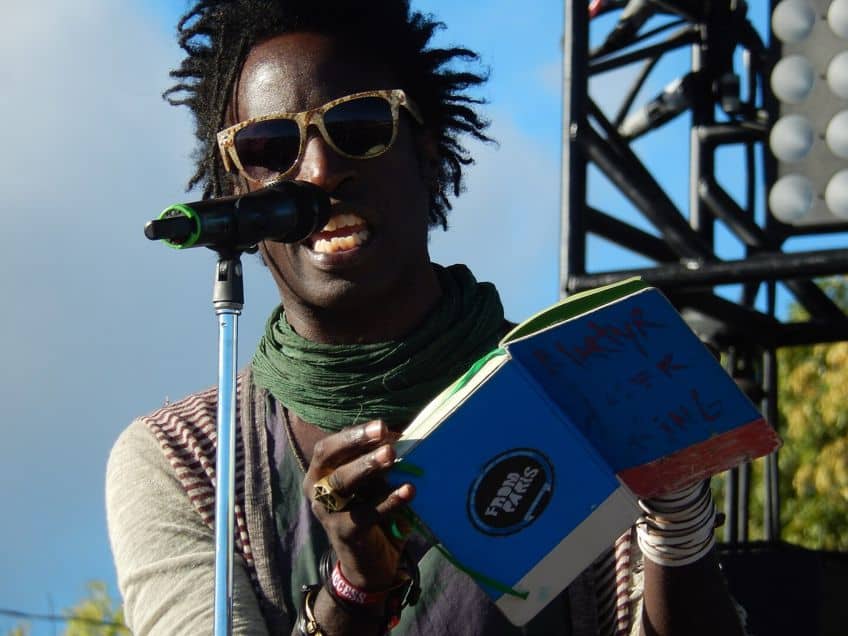
Beau Sia (1976)
| Birth | 1976 |
| Death | Present |
| Place of Birth | Ohio, United States |
A Tony Award winner, Beau Sia is a prominent slam poet known for his energetic and humorous performances that often tackle issues of race, identity, and cultural stereotypes. As a Chinese American poet, Sia brings a unique perspective to the slam poetry scene, using his platform to address the complexities of Asian American experiences. His work is characterized by its sharp wit, satirical edge, and dynamic delivery, which have earned him widespread recognition and numerous slam poetry titles.
Sia’s contributions have helped broaden the scope of topics addressed in slam poetry, making it a more inclusive and diverse art form.
Sarah Kay and Phil Kaye (1988)
| Birth | 1988 (Kay and Kaye) |
| Death | Present |
| Place of Birth | New York City, New York (Kay) and Los Angeles, California (Kaye), United States |
Sarah Kay and Phil Kaye are celebrated for their collaborative performances and individual contributions to slam poetry. Sarah Kay, known for her heartfelt and introspective poems, gained widespread acclaim with her TED Talk performance of If I Should Have a Daughter, which beautifully captures themes of love, growth, and resilience. Phil Kaye’s poetry often explores personal and cultural identity, memory, and family, delivered with a captivating blend of humor and poignancy.
Together, they co-founded Project VOICE, an organization dedicated to using spoken word to inspire creativity and self-expression in schools and communities, further solidifying their impact on the slam poetry landscape.

Elizabeth Acevedo (1988)
| Birth | February 15, 1988 |
| Death | Present |
| Place of Birth | New York City, New York, United States |
Elizabeth Acevedo, an acclaimed poet and author, has made significant contributions to slam poetry with her powerful and lyrical verse. Her work often explores themes of Afro-Latina identity, feminism, and personal empowerment, delivered with a passionate and commanding presence. Acevedo’s performances are known for their emotional depth and rhythmic beauty, captivating audiences and earning her numerous accolades, including the National Poetry Slam Championship in 2014.
Her transition from slam poetry to young adult literature, with award-winning novels like The Poet X, has further cemented her influence in both the literary and performance poetry worlds.

Ed Mabrey (Unknown)
| Birth | Unknown |
| Death | Present |
| Place of Birth | Unknown |
Ed Mabrey is a highly accomplished slam poet and four-time Individual World Poetry Slam Champion, known for his commanding stage presence and profound explorations of social issues. His poetry often addresses topics such as race, justice, and personal struggle, delivered with a powerful and resonant voice that captivates audiences. Mabrey’s work is marked by its eloquence, emotional depth, and incisive commentary, making him a leading figure in the slam poetry community.
His contributions extend beyond performance, as he actively mentors emerging poets and advocates for the transformative power of spoken word.
Gabrielle Tuloup (Unknown)
| Birth | Unknown |
| Death | Present |
| Place of Birth | Unknown |
Gabrielle Tuloup is a notable slam poet whose work is distinguished by its introspective and emotive qualities, often exploring themes of love, loss, and human connection. Her poetry is characterized by its lyrical beauty, thoughtful imagery, and heartfelt delivery, engaging audiences on a deeply personal level. Tuloup’s performances are marked by their sincerity and emotional resonance, making her a beloved figure in the slam poetry scene. Through her evocative and poignant verse, she continues to contribute to the richness and diversity of slam poetry, inspiring both peers and audiences alike.
Slam poetry stands as a vibrant and transformative art form, uniquely bridging the gap between traditional literary expression and contemporary performance art. It empowers poets to voice their truths, challenge societal norms, and foster community engagement through shared experiences. The enduring impact of renowned slam poets highlights the genre’s ability to resonate deeply with audiences, inspiring both personal reflection and collective action. As slam poetry continues to evolve, it remains a crucial platform for marginalized voices and a testament to the enduring power of spoken word to evoke change and connect people across diverse backgrounds. The legacy of slam poetry’s pioneers and the rising generation of poets ensures that this dynamic art form will continue to thrive, influence, and inspire for years to come.
Frequently Asked Questions
Who Are Some Major Figures in the History of Slam Poetry?
Major figures in slam poetry include Marc Smith, who is credited with starting the poetry slam movement in Chicago in 1984, and poets like Saul Williams and Taylor Mali. Contemporary voices like Sarah Kay and Phil Kaye have also gained prominence in the slam poetry circle.
What Distinguishes Slam Poetry from Traditional Poetic Forms?
Slam poetry is distinct in its emphasis on performance. Poets deliver their verses with passion, rhythm, and intonation, making the experience interactive and dynamic. Unlike traditional poetry, which is often written for the page, slam poetry is crafted for the stage and audience engagement.
What Guidelines Do Participants Follow in a Slam Poetry Competition?
In a typical slam poetry competition, poets perform original work and adhere to a time limit, usually three minutes. Performances are judged by audience members on a numeric scale, with higher scores awarded for both the quality of the literary work and the power of the performance.
What Are Common Themes and Topics Addressed in Slam Poetry?
Slam poetry often grapples with personal and social issues such as identity, race, gender, politics, and mental health. The raw and expressive nature of slam allows poets to confront taboo subjects and advocate for social justice.
Isabella studied at the University of Cape Town in South Africa and graduated with a Bachelor of Arts majoring in English Literature & Language and Psychology. Throughout her undergraduate years, she took Art History as an additional subject and absolutely loved it. Building on from her art history knowledge that began in high school, art has always been a particular area of fascination for her. From learning about artworks previously unknown to her, or sharpening her existing understanding of specific works, the ability to continue learning within this interesting sphere excites her greatly.
Her focal points of interest in art history encompass profiling specific artists and art movements, as it is these areas where she is able to really dig deep into the rich narrative of the art world. Additionally, she particularly enjoys exploring the different artistic styles of the 20th century, as well as the important impact that female artists have had on the development of art history.
Learn more about Isabella Meyer and the Art in Context Team.
Cite this Article
Isabella, Meyer, “Famous Slam Poets – The Art of Poetry Performance.” Art in Context. May 27, 2024. URL: https://artincontext.org/famous-slam-poets/
Meyer, I. (2024, 27 May). Famous Slam Poets – The Art of Poetry Performance. Art in Context. https://artincontext.org/famous-slam-poets/
Meyer, Isabella. “Famous Slam Poets – The Art of Poetry Performance.” Art in Context, May 27, 2024. https://artincontext.org/famous-slam-poets/.


